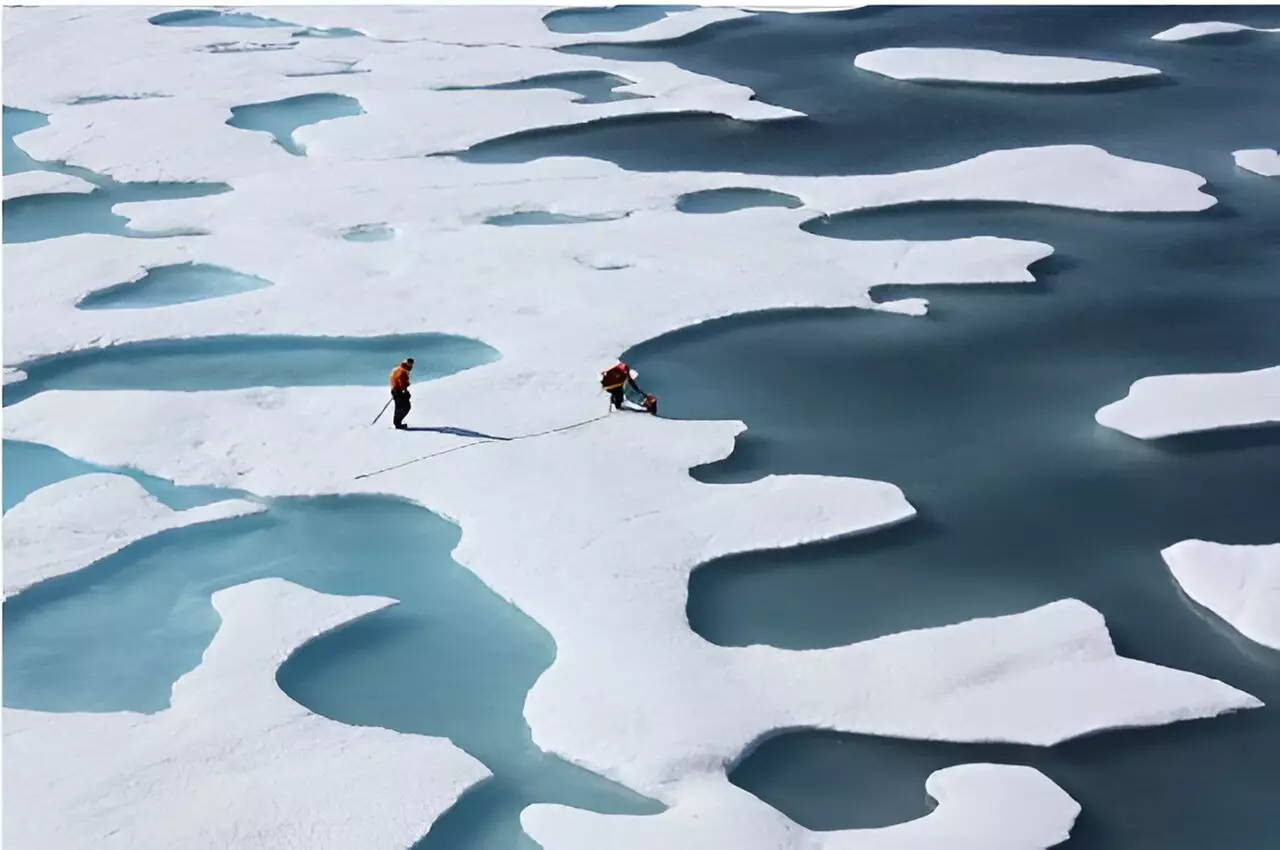The rapid decline in polar ice has emerged as a startling indicator of climate change, with recent research revealing a significant reduction in the cooling power of sea ice. A study led by scientists from the University of Michigan highlights the fact that the Arctic has lost approximately 25% of its cooling capability since 1980, while the world at large has experienced a decline of around 15%. This startling revelation underscores the growing urgency of the climate crisis as it showcases tangible, measurable alterations in the Earth’s climate system. It’s clinically clear that our changing environment is not merely a future concern—it is a present-day reality that demands our immediate attention.
Compelling Data and Historical Context
The researchers utilized a wealth of satellite measurements to assess cloud cover and the solar radiation reflection properties of sea ice over a span of four decades. What they discovered was troubling: the rate of decline in the Arctic’s cooling power is nearly double that of the annual average sea ice area. This finding not only complicates our understanding of the climate feedback mechanisms associated with melting ice but also suggests the potential for harsher climatic repercussions than previously anticipated. The implications of such findings resonate deeply—especially when one considers that climate models primarily rely on century-long simulations to predict changes. The robustness of the University of Michigan’s findings offers a much-needed contemporary counterpoint to less urgent narratives surrounding climate change.
The South Pole’s Troubling Shift
For years, the Antarctic stood as a seemingly stable bastion against the encroaching climate crisis, with steady sea ice levels observed from 2007 to the early 2010s. However, this narrative shifted dramatically in 2016 when a Texas-sized expanse of ice melted off one of Antarctica’s largest ice shelves. This event signaled not just a local crisis but a broader global concern, as the cooling power of the remaining ice has since failed to rebound. The findings indicate that the latter half of the 2010s represents the weakest global sea ice cooling effect observed since the early 1980s, driving home the point that perceptions of geographical resilience may be dangerously misleading.
Beyond Ice Coverage: A Critical Reflection
What compounds this problem even further is the deteriorating reflectivity of the remaining ice layers. As temperatures rise and precipitation patterns shift, the ice becomes thinner and marshier, resulting in the formation of melt ponds that reflect less solar radiation. In the Arctic, this phenomenon has become most acute during the sunniest parts of the year, suggesting an interactive cycle of warming that we cannot afford to ignore. The researchers posit that these changes may also be occurring in Antarctica, indicating a far-reaching feedback loop that could exacerbate global warming effects. The 40% increase in warming feedback from Antarctic sea ice changes alone highlights a critical need for climate models to account for this new variable.
A Call to Action for Climate Science and Policy
The research team is resolute in their mission to disseminate their findings, believing that updated models addressing sea ice cooling power and the resulting climate feedback are crucial for the climate science community. Their proposal emphasizes the necessity of incorporating these findings into climate adaptation plans, making clear that strategic responses to climate change must evolve in step with our latest understanding. Ignoring such pivotal data could mean overlooking a significant portion of global energy absorption, crippling our ability to respond to climate change effectively.
Alisher Duspayev, the lead author, aptly encapsulated the urgency of their findings by advocating for immediate attention from decision-makers. As we navigate this precarious phase of climate history, it is clear that the destiny of our planet hangs in the balance. The disappearance of sea ice and its resultant cooling decrease goes beyond numbers on a chart; it represents an existential threat that should spark a transformative shift in how we approach climate policy and scientific research. By recognizing the breadth and depth of this crisis, we open the door to clear-eyed responses that could determine the fate of ecosystems and human societies alike.


Leave a Reply